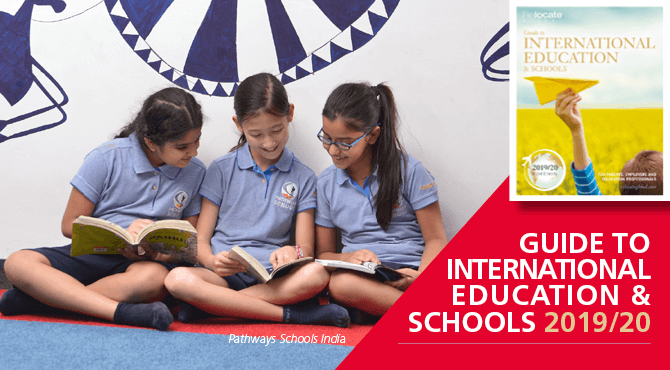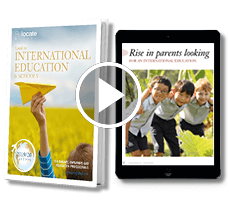The education system in India
India offers a growing range of schooling opportunities for globally mobile families. The rapid expansion of its international-school sector, however, brings with it some potential drawbacks, which parents should be aware of.
 “The Indian school system is one of the largest and most complex in the world,” says Rob Lynes, former director of the British Council in India. “The complexity of the system stems from India’s need to maintain standards and uniformity while giving scope for its diverse culture and heritage to grow and flourish across the length and breadth of the country.“After independence, India has worked hard to provide access to almost all its young people, but it has only just begun to focus on aspects of quality and seeking to improve learning outcomes.”Duncan Wilson, the British Council’s current Director of Schools, English and Skills (SES) India, coordinates the British Council‘s work in these sectors across the country. In the public sector, he works with national governments and other organisations to enhance capacity in teaching from pre-school to Higher Education.The British Council’s work in SES includes English teacher training and teacher language development, and providing access to a wide range of teaching resources, curricula, assessment tools and teaching qualifications. In India, the British Council aims to engage at policy level, including in the field of vocational and English education.In 2010, India’s Right to Education Act came into force, giving all children between the ages of six and 14 access to free, compulsory education in a local school.
“The Indian school system is one of the largest and most complex in the world,” says Rob Lynes, former director of the British Council in India. “The complexity of the system stems from India’s need to maintain standards and uniformity while giving scope for its diverse culture and heritage to grow and flourish across the length and breadth of the country.“After independence, India has worked hard to provide access to almost all its young people, but it has only just begun to focus on aspects of quality and seeking to improve learning outcomes.”Duncan Wilson, the British Council’s current Director of Schools, English and Skills (SES) India, coordinates the British Council‘s work in these sectors across the country. In the public sector, he works with national governments and other organisations to enhance capacity in teaching from pre-school to Higher Education.The British Council’s work in SES includes English teacher training and teacher language development, and providing access to a wide range of teaching resources, curricula, assessment tools and teaching qualifications. In India, the British Council aims to engage at policy level, including in the field of vocational and English education.In 2010, India’s Right to Education Act came into force, giving all children between the ages of six and 14 access to free, compulsory education in a local school. In its five-year plan covering 2012–2017, the Indian government committed to improving the quality of its education provision. According to the British Council, there are currently steep dropout rates at secondary level, particularly among disadvantaged groups, and the teacher-to-pupil ratio is extremely low, resulting in “weak learning outcomes”.Ownership of schools is split between the government and private institutions, which receive a government grant. The rest are privately owned, privately run schools, usually teaching an international curriculum.
In its five-year plan covering 2012–2017, the Indian government committed to improving the quality of its education provision. According to the British Council, there are currently steep dropout rates at secondary level, particularly among disadvantaged groups, and the teacher-to-pupil ratio is extremely low, resulting in “weak learning outcomes”.Ownership of schools is split between the government and private institutions, which receive a government grant. The rest are privately owned, privately run schools, usually teaching an international curriculum.Extending the options
The global expansion of international school groups has meant that India now has more than 525 English-medium international schools in India, 30 per cent of them situated in Mumbai and BangaloreLike many international schools in India, Pathways World School, a group of three schools located in Gurgaon and Noida, in the Delhi National Capital Region, teaches the International Baccalaureate (IB) programme. The IB has proved itself to be the big success story in secondary education over the past 30 years and is now taught in over 150 countries worldwide.The fact that the IB is accessible to students from any country, and from different educational backgrounds, makes it a popular choice for families relocating to India and concerned about the transferability of their children’s education.“While the national curricula remain the root of all countries globally,” says Dr Sarvesh Naidu, executive director of Pathways Schools, “schools are now preparing to offer a more diverse and flexible range of education that matches the aspirations of students and shapes them to face the evolving global environment and remain connected with technology advancement, frequent mobility, and varied cultural and social norms.”Alongside the IB, many international schools in India offer learning systems from the English National Curriculum to the American programme.However, there has been concern among established international schools that some providers are taking advantage of the boom by setting up institutions using the international label when, in fact, they are not following an accredited curriculum.The importance of accreditation
The popularity of private schools with aspirational local families is fuelling the trend and, according to research commissioned by the Institute of Labor Economics (IZA), in recent years there has been a rapid migration of students out of the state sector with 30 per cent of Indian students now attending some form of ‘private’ school.In 2009, the OECD’s Programme for International Student Assessment (PISA) survey – which tests the skills and knowledge of 15-year-olds with the aim of evaluating education systems – ranked India near the bottom of the 74 participating countries and India has since boycotted the three-yearly survey.This is set to change, however as the Indian government has announced plans to participate in the 2021 test. Relocating families should therefore be aware that not all private schools are created equal. Families should always look for a recognised school accreditation, such as the Council of International Schools (CIS), The International Baccalaureate Organisation (IBO) and the Council of British International Schools (COBIS) if they are to ensure that their children receive the best quality education whilst living in India.This article is from Relocate Global's Guide to International Education & Schools 2019/20 which is packed with expert tips and information for those relocating and the professionals supporting them. For volume options, co-branded editions, digital or online licence agreements and advertising opportunities, contact Fiona Murchie at +44 (0)1892 891334 or email fiona@relocatemagazine.comNow available as an ebook on Amazon! Simply download from Amazon onto your Kindle, mobile phone or tablet to read wherever you are!
Subscribe to Relocate Extra, our monthly newsletter, to get all the latest international assignments and global mobility news.Relocate’s new Global Mobility Toolkit provides free information, practical advice and support for HR, global mobility managers and global teams operating overseas.
 Access hundreds of global services and suppliers in our Online Directory
Access hundreds of global services and suppliers in our Online Directory For more education and school-related news, visit our Education and Schools pages.© 2019. This article first appeared in the 2019/20 edition of the Guide to International Education & Schools published by Relocate Global, Spray Hill, Hastings Road, Lamberhurst, Kent TN3 8JB. All rights reserved. This publication (or any part thereof) may not be reproduced in any form without the prior written permission of Relocate Global. Relocate Global accepts no liability for the accuracy of the contents or any opinions expressed herein.
For more education and school-related news, visit our Education and Schools pages.© 2019. This article first appeared in the 2019/20 edition of the Guide to International Education & Schools published by Relocate Global, Spray Hill, Hastings Road, Lamberhurst, Kent TN3 8JB. All rights reserved. This publication (or any part thereof) may not be reproduced in any form without the prior written permission of Relocate Global. Relocate Global accepts no liability for the accuracy of the contents or any opinions expressed herein.





























